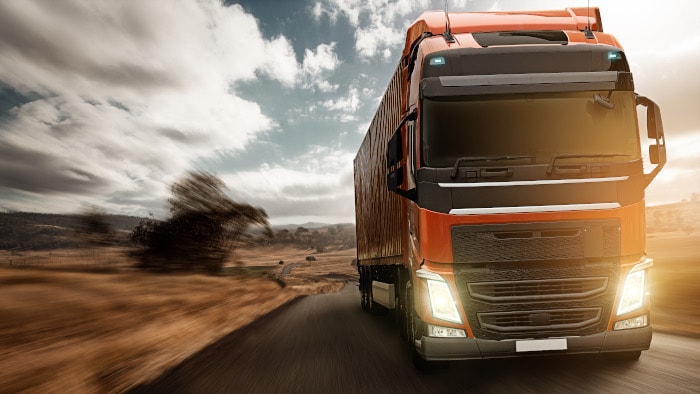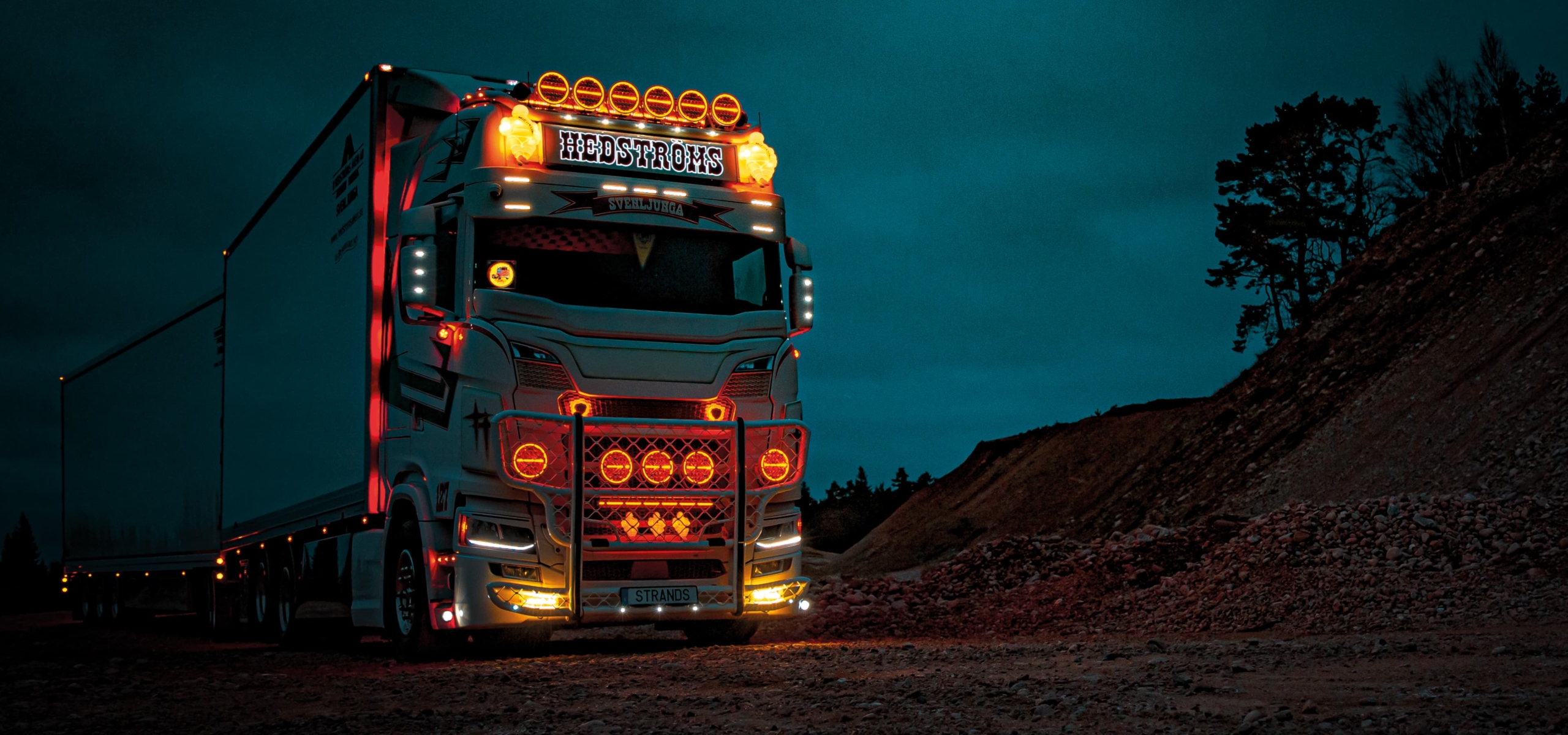Lorry lights are essential for safety and visibility on the road, especially during night or adverse weather conditions. They help prevent accidents and ensure compliance with legal standards.
Lorry lights play a crucial role in road safety by improving visibility for drivers and other road users. Proper lighting ensures that lorries can be seen from a distance, reducing the risk of collisions. Modern lorry lights come in various types, including LED, halogen, and xenon, each offering different benefits.
LED lights are energy-efficient and last longer, while halogen lights are cost-effective. Regular maintenance and timely replacement of lorry lights are vital to ensure they function correctly. Investing in high-quality lorry lights enhances safety and complies with road regulations, protecting both the driver and other motorists.

Credit: www.philips.ae
Importance Of Lorry Lights
Lorry lights play a crucial role in road safety and legal compliance. Their importance cannot be overstated. Proper lighting ensures that lorries are visible and can navigate safely. This reduces the risk of accidents and improves overall road safety.
Safety On The Road
Lorry lights are vital for safety on the road. They help other drivers see the lorry, especially in poor weather or at night. Good lighting prevents collisions and keeps everyone safe.
Important lights include:
- Headlights
- Brake lights
- Indicator lights
- Tail lights
Headlights illuminate the road ahead. Brake lights show when the lorry is stopping. Indicator lights signal turns. Tail lights make the lorry visible from behind.
Legal Requirements
Lorry lights must comply with legal requirements. These laws ensure lorries are safe to operate. Non-compliance can result in fines and penalties.
Common legal requirements include:
| Light Type | Requirement |
|---|---|
| Headlights | Must be functional and properly aligned |
| Brake lights | Must illuminate immediately when brakes are applied |
| Indicator lights | Must flash at a consistent rate |
| Tail lights | Must be visible from a distance |
Regular checks ensure all lights meet these standards. Proper maintenance avoids legal issues and keeps the road safe.
Types Of Lorry Lights
Lorries need different lights for safe driving. Each light has a specific role. Let’s explore the types of lorry lights.
Headlights
Headlights are essential for night driving. They help drivers see the road. Headlights also make the lorry visible to others.
| Type | Purpose |
|---|---|
| Low Beam | Used in normal night driving |
| High Beam | Used in very dark areas |
Tail Lights
Tail lights are located at the rear. They light up when the headlights are on. Tail lights help others see the lorry from behind.
- Red in color
- Improve visibility
Indicator Lights
Indicator lights show the direction of the lorry. They blink to signal turns. Indicator lights are crucial for safe lane changes.
- Front Indicator Lights
- Rear Indicator Lights
- Side Indicator Lights
Fog Lights
Fog lights are useful in foggy conditions. They cut through fog better than regular lights. Fog lights are usually mounted low on the lorry.
| Position | Color |
|---|---|
| Front | White or Yellow |
| Rear | Red |
Choosing The Right Lights
Choosing the right lights for your lorry is crucial. Proper lighting ensures safety and efficiency. There are several factors to consider, such as brightness, energy use, and durability.
Brightness Levels
Brightness levels are vital for lorry lights. They impact visibility on the road. Consider the following brightness options:
- Low Beam: Suitable for city driving.
- High Beam: Ideal for highways and rural roads.
- Fog Lights: Use in poor weather conditions.
LED lights offer great brightness and longevity. Halogen bulbs are cheaper but less bright. Xenon lights are very bright but costly. Choose according to your needs.
Energy Efficiency
Energy-efficient lights save money and reduce environmental impact. Consider these options:
| Light Type | Energy Efficiency | Longevity |
|---|---|---|
| LED | High | 50,000 hours |
| Halogen | Medium | 1,000 hours |
| Xenon | Medium-High | 10,000 hours |
LED lights are the most energy-efficient and last the longest. Halogen bulbs consume more power and last less. Xenon lights offer a balance of brightness and efficiency.

Credit: strandseurope.com
Installation Tips
Installing lorry lights can improve visibility and safety on the road. Proper installation ensures your lights function correctly and last longer. Here are some tips to help you install lorry lights effectively.
Diy Vs. Professional
DIY installation can be cost-effective and satisfying. You need basic tools and a guide. Follow these steps:
- Read the instruction manual thoroughly.
- Gather necessary tools: screwdrivers, pliers, and wire cutters.
- Disconnect the battery before starting.
- Mount the lights securely using brackets.
- Connect the wiring correctly, following the color codes.
- Test the lights before finalizing the setup.
DIY installation might save money, but it requires time and effort.
Professional installation ensures expertise and precision. A professional can handle complex wiring and avoid mistakes. It also includes warranties for workmanship and parts. Consider a professional if you’re short on time or unsure about the process.
Common Mistakes
Avoid these common mistakes during installation:
- Incorrect Wiring: Follow the wiring diagram closely. Incorrect connections can cause malfunctions.
- Loose Mounting: Ensure lights are securely fastened. Loose lights can fall off and cause accidents.
- Skipping Battery Disconnect: Always disconnect the battery. It prevents short circuits and shocks.
- Ignoring Ground Connections: Proper grounding is crucial. It ensures the electrical system works correctly.
- Overloading Circuits: Check the circuit capacity. Overloading can blow fuses and damage the system.
Following these tips can help you avoid problems. Proper installation leads to better performance and longevity for your lorry lights.
Maintenance And Care
Proper maintenance and care of lorry lights are essential. It ensures safety and extends their lifespan. This guide will cover essential tips and best practices.
Cleaning Tips
Regular cleaning keeps lorry lights bright and effective. Dirt and grime can reduce visibility. Follow these simple steps:
- Use a soft cloth to wipe off dust.
- Apply a mild soap solution for tough stains.
- Rinse with clean water and dry with a soft towel.
- Avoid harsh chemicals that can damage the light cover.
Consistent cleaning prevents buildup and keeps lights functioning well. Make it a routine to check and clean your lights weekly.
Replacing Bulbs
Replacing bulbs is crucial for maintaining optimal lighting. Follow these easy steps:
- Turn off the lorry and disconnect the battery.
- Remove the light cover using a screwdriver.
- Carefully take out the old bulb.
- Insert the new bulb, ensuring it fits snugly.
- Replace the light cover and secure it tightly.
- Reconnect the battery and test the new bulb.
Always carry spare bulbs for emergencies. Check your lights monthly to ensure they are working correctly. Proper maintenance improves safety and visibility on the road.
Innovative Lighting Solutions
Lorry lights have come a long way in recent years. Innovative lighting solutions provide better visibility and safety. Modern technologies make them more efficient and durable.
Led Technology
LED lights are energy-efficient and long-lasting. They consume less power, reducing the strain on the lorry’s battery. These lights also have a longer lifespan compared to traditional bulbs.
LED lights offer brighter illumination. This enhances visibility during night drives and bad weather. They also generate less heat, making them safer to use.
Here are some key benefits of LED technology:
- Energy-efficient
- Long-lasting
- Brighter illumination
- Less heat generation
Adaptive Lighting
Adaptive lighting is another innovative solution. These lights adjust their brightness based on driving conditions. They offer better visibility and improve safety.
Adaptive lighting systems use sensors to detect changes in the environment. They automatically adjust the light beam direction and intensity. This ensures optimal lighting at all times.
Benefits of adaptive lighting include:
- Enhanced visibility
- Improved safety
- Automatic adjustments
These advanced systems make driving safer and more comfortable. They reduce the risk of accidents and improve night driving.
| Feature | LED Technology | Adaptive Lighting |
|---|---|---|
| Energy Efficiency | High | Moderate |
| Brightness | Very Bright | Adjustable |
| Lifespan | Long | Variable |
Aesthetic Customizations
Enhancing your lorry with aesthetic lights can be exciting. These customizations make your vehicle look unique. You can choose from various colors and light patterns.
Color Options
Lorry lights come in many colors. Popular choices include:
- Red: Bold and attention-grabbing.
- Blue: Cool and calming.
- Green: Fresh and vibrant.
- White: Clean and classic.
Some lights can change colors. This feature adds versatility. You can match the lights to your lorry’s theme.
Light Patterns
Light patterns add flair to your lorry. Some popular patterns are:
| Pattern | Description |
|---|---|
| Strobe | Flashes quickly for high visibility. |
| Pulse | Slowly fades in and out. |
| Wave | Moves in a wave-like motion. |
| Solid | Stays on without blinking. |
Custom light patterns make your lorry stand out. They create a unique look and feel.

Credit: blog.daf.co.uk
Cost Considerations
Understanding the cost considerations of lorry lights can help you make informed decisions. This section explores the initial investment and long-term savings associated with lorry lights.
Initial Investment
The initial investment for lorry lights varies based on the type and brand. High-quality LED lights typically cost more upfront. Yet, they offer better performance and longevity. Here’s a simple breakdown:
| Type of Lorry Light | Average Cost |
|---|---|
| Halogen Lights | $20 – $50 |
| Xenon Lights | $50 – $100 |
| LED Lights | $100 – $200 |
Investing in LED lights may seem costly. Yet, they offer greater benefits over time.
Long-term Savings
Long-term savings are a crucial factor in cost considerations. LED lights, though pricier initially, save money in the long run.
- Energy Efficiency: LED lights use less power, reducing fuel consumption.
- Durability: They last longer, minimizing replacement costs.
- Maintenance: Fewer breakdowns mean less frequent maintenance.
Here’s a comparison of the lifespan and energy consumption:
| Type of Lorry Light | Average Lifespan (Hours) | Energy Consumption (Watts) |
|---|---|---|
| Halogen Lights | 500 – 1,000 | 55 – 100 |
| Xenon Lights | 2,000 – 3,000 | 35 – 55 |
| LED Lights | 30,000 – 50,000 | 20 – 30 |
LED lights reduce operational costs significantly over time. This makes them a wise investment for lorry owners.
Frequently Asked Questions
What Are The 5 Lights On Top Of A Truck Called?
The 5 lights on top of a truck are called cab lights or clearance lights. They improve visibility and indicate the vehicle’s width.
What Are Cab Lights On A Truck?
Cab lights on a truck are small, roof-mounted lights. They enhance visibility and indicate the truck’s size and presence.
What Are The Lights On A Tow Truck Called?
The lights on a tow truck are called warning lights or emergency lights. They alert other drivers to its presence.
Why Do People Put Light Bars On Trucks?
People put light bars on trucks to improve visibility during off-road driving, night trips, and adverse weather conditions.
Conclusion
Choosing the right lorry lights ensures safety and efficiency. Quality lighting reduces accidents and improves visibility. Invest in reliable lorry lights for better performance on the road. Stay safe and compliant with regulations by maintaining your lorry’s lighting system. Remember, good lighting means safer journeys for everyone.


